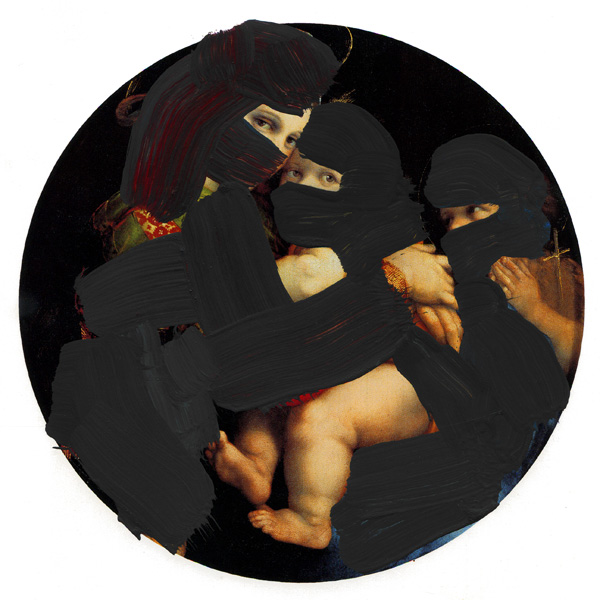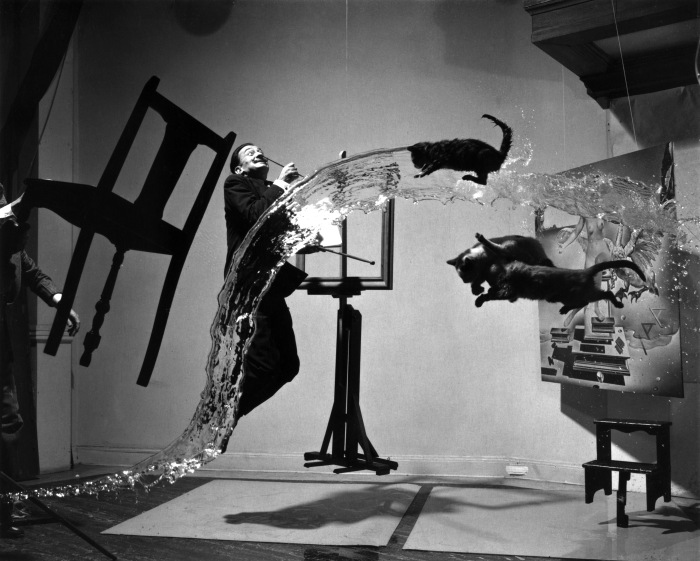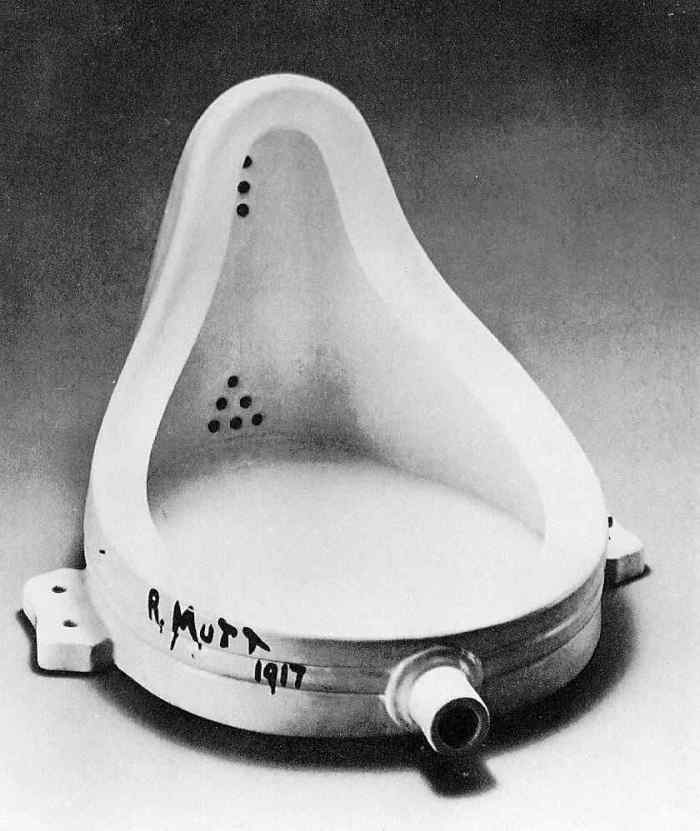 It seems that, without consent, I am constantly driven by an essential human desire to locate the familiar and comfortable in circumstances that I have previously never encountered. Nowhere more so does this occur than in my observation of art. Perhaps it is inherent in all sentient beings to search for what we know – to revisit safe environments; to follow paths laid before us; to find solace and assurance in the reinforced familiarity of what we ‘know’ to be true and convenient; to restrict our existence and experiences to within the narrow limitations of our socially and environmentally constructed perceptions.
It seems that, without consent, I am constantly driven by an essential human desire to locate the familiar and comfortable in circumstances that I have previously never encountered. Nowhere more so does this occur than in my observation of art. Perhaps it is inherent in all sentient beings to search for what we know – to revisit safe environments; to follow paths laid before us; to find solace and assurance in the reinforced familiarity of what we ‘know’ to be true and convenient; to restrict our existence and experiences to within the narrow limitations of our socially and environmentally constructed perceptions.  Though, at times we are forced out of our comfort zones – whether by involuntary necessity, or by our own, keen, volition. In these moments we are given the chance to see things anew, to experience a naivety and innocence that is otherwise stripped from us by the burden of expectation. In these rare moments we have the opportunity to either search, desperately, for that familiar place, or to give in to the unknown – to allow our conscious minds to be liberated from the matrix of our own institutionalised thought.
Though, at times we are forced out of our comfort zones – whether by involuntary necessity, or by our own, keen, volition. In these moments we are given the chance to see things anew, to experience a naivety and innocence that is otherwise stripped from us by the burden of expectation. In these rare moments we have the opportunity to either search, desperately, for that familiar place, or to give in to the unknown – to allow our conscious minds to be liberated from the matrix of our own institutionalised thought.  Salvador Dali believed that Surrealism offered such a liberty. That to boycott the comradery so often formed between expression and conscious thought would be to destroy the “shackles limiting our vision.” Vision, indeed, imposed upon by the rhetoric of reinforced social and personal norms. Is it, then, appropriate to suggest that all expression must be enacted while in a state of subconsciousness? This would surely lead to the pursuit of a state of mind which requires the very opposite of such endeavours – To be aware of, and to act upon ones subconsciousness, it seems, would, in fact, be an act of very intentional consciousness. Something Freud, godhead of Surrealist thought, was acutely aware and critical of in the practice of Surrealist devotees.
Salvador Dali believed that Surrealism offered such a liberty. That to boycott the comradery so often formed between expression and conscious thought would be to destroy the “shackles limiting our vision.” Vision, indeed, imposed upon by the rhetoric of reinforced social and personal norms. Is it, then, appropriate to suggest that all expression must be enacted while in a state of subconsciousness? This would surely lead to the pursuit of a state of mind which requires the very opposite of such endeavours – To be aware of, and to act upon ones subconsciousness, it seems, would, in fact, be an act of very intentional consciousness. Something Freud, godhead of Surrealist thought, was acutely aware and critical of in the practice of Surrealist devotees.  When I see a painting with an agitated application of paint, lack of rigid composition, and the rejection of recognisable form, I am urgently compelled to liken it to a work of abstract expressionism, or more particularly, “in the manner of Jackson Pollock”. These thoughts, whether shared or repressed, are like a reflux of desperate reassurance – to find what is instantly, and most often only superficially, recognisable in something that may only be remotely comparable. It is an often sad and unfruitful exercise, but one that affirms the value of personal knowledge and interpretation.
When I see a painting with an agitated application of paint, lack of rigid composition, and the rejection of recognisable form, I am urgently compelled to liken it to a work of abstract expressionism, or more particularly, “in the manner of Jackson Pollock”. These thoughts, whether shared or repressed, are like a reflux of desperate reassurance – to find what is instantly, and most often only superficially, recognisable in something that may only be remotely comparable. It is an often sad and unfruitful exercise, but one that affirms the value of personal knowledge and interpretation.  I am compelled to compare, because I am fearful of suggesting a notion previously unacknowledged. I am fearful of suggesting a notion previously unacknowledged, because I instinctively avoid the possibility of being perceived as ‘wrong’. I instinctively avoid the possibility of being perceived as ‘wrong’, because it is undesirable to be thought of as an idiot. Unless, of course, a comparison I make is wildly inappropriate, in which case I will likely be identified as all of the above.
I am compelled to compare, because I am fearful of suggesting a notion previously unacknowledged. I am fearful of suggesting a notion previously unacknowledged, because I instinctively avoid the possibility of being perceived as ‘wrong’. I instinctively avoid the possibility of being perceived as ‘wrong’, because it is undesirable to be thought of as an idiot. Unless, of course, a comparison I make is wildly inappropriate, in which case I will likely be identified as all of the above.  One must hesitate to ignore the value of comparison completely. It can act as both an avenue for discovery and a platform for productive visual analysis – especially if allusion and quotation is the artist’s intention. How can one not appreciate the influence of the past on the present? Culture does not exist in a vacuum; it is not isolated, insular and totally exclusive to the present moment. It is a writhing, living entity, constantly adapting to the ebb and flow of human experience – a responsive creature that reflects the values and desires of a beautifully indecisive population of collective individuals. Conversely, art is the product of culture, and as such is in a state of constant flux. No one work of art is totally independent of the influences of a previous time, even if in an act of retaliation, the mere acknowledgment of a previous style locates the work in a lineage of a cultural and artistic tradition.
One must hesitate to ignore the value of comparison completely. It can act as both an avenue for discovery and a platform for productive visual analysis – especially if allusion and quotation is the artist’s intention. How can one not appreciate the influence of the past on the present? Culture does not exist in a vacuum; it is not isolated, insular and totally exclusive to the present moment. It is a writhing, living entity, constantly adapting to the ebb and flow of human experience – a responsive creature that reflects the values and desires of a beautifully indecisive population of collective individuals. Conversely, art is the product of culture, and as such is in a state of constant flux. No one work of art is totally independent of the influences of a previous time, even if in an act of retaliation, the mere acknowledgment of a previous style locates the work in a lineage of a cultural and artistic tradition.  It is with compulsion that a viewer finds familiarity in a previously unencountered work of art. Whether it is valid or imaginary, we desire the insularity of our current knowledge and understanding, because of its secure nature and our constant pursuit of sense and belonging. One way or another, when something looks like a fan, sounds like a fan, and feels like a fan, chances are you’re looking at someone’s not-at-all-influenced-by-but-totally-influenced-by-Duchamp objet d’art. Or a fan.
It is with compulsion that a viewer finds familiarity in a previously unencountered work of art. Whether it is valid or imaginary, we desire the insularity of our current knowledge and understanding, because of its secure nature and our constant pursuit of sense and belonging. One way or another, when something looks like a fan, sounds like a fan, and feels like a fan, chances are you’re looking at someone’s not-at-all-influenced-by-but-totally-influenced-by-Duchamp objet d’art. Or a fan.  Plate 1: Theodore Roosevelt quote (Tumblr) Plate 2: Dark waterfall (Tumblr) Plate 3: Chad Wys, Raphael Deleted 1, 2010, paint on found print, diam. 5.5″ (http://chadwys.com/work_paper10.html#Raphael%20Deleted%201) Plate 4: Philippe Halsman, Dali Atomicus, 1948, photograph (http://en.wikipedia.org/wiki/File:Salvador_Dali_A_(Dali_Atomicus)_09633u.jpg) Plate 5: Colourful painting (Tumblr) Plate 6: May The Bridges I Burn Light The Way (Tumblr) Plate 7: Marcel Duchamp, Fountain, 1917, ready-made porcelain urinal (http://www.tate.org.uk/art/artworks/duchamp-fountain-t07573) Plate 8: Ida Skivene, Girl With a Pearl Earring … On Toast (http://www.adobetips.org/famous-paintings-served-as-toasts-in-plates.html)
Plate 1: Theodore Roosevelt quote (Tumblr) Plate 2: Dark waterfall (Tumblr) Plate 3: Chad Wys, Raphael Deleted 1, 2010, paint on found print, diam. 5.5″ (http://chadwys.com/work_paper10.html#Raphael%20Deleted%201) Plate 4: Philippe Halsman, Dali Atomicus, 1948, photograph (http://en.wikipedia.org/wiki/File:Salvador_Dali_A_(Dali_Atomicus)_09633u.jpg) Plate 5: Colourful painting (Tumblr) Plate 6: May The Bridges I Burn Light The Way (Tumblr) Plate 7: Marcel Duchamp, Fountain, 1917, ready-made porcelain urinal (http://www.tate.org.uk/art/artworks/duchamp-fountain-t07573) Plate 8: Ida Skivene, Girl With a Pearl Earring … On Toast (http://www.adobetips.org/famous-paintings-served-as-toasts-in-plates.html)
- Comment
- Reblog
-
Subscribe
Subscribed
Already have a WordPress.com account? Log in now.